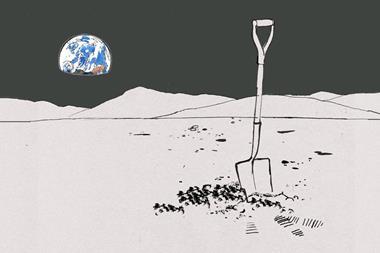Readers discuss the history of atoms, and ask for help treating a chronic eye condition
Sizing up atoms
Vanessa Seifert proposes that real belief in atoms had to wait for Jean Perrin and that John Dalton did not think of them as physically real. Real belief in atoms or molecules may go back further than is commonly supposed. It’s hard to read Lucretius’ On the Nature of Things, written about 50 BCE, without a feeling for his intense belief in the particulate nature of matter.
The same can be said of one of the earliest such contributions in English, A Fabrick of Science natural, upon the Hypothesis of Atoms, of 1654 by Walter Charleton, later elected a Fellow of the Royal Society. His quantitative assumptions about the size of the odourant molecules in incense correspond to a value for Avogadro’s number of approximately 1020.
Would he have proposed quantitative arguments about their size if he thought atoms or molecules did not have any physical existence?
Robert Crabtree, FRSC
Yale, US
Relating to the belief of chemists in the existence of atoms, the story in question predates the discoveries of nuclear structures (following the late 19th century) insofar as it became accepted (since 1874) that the valencies of carbon bonds are directed to the corners of a tetrahedron. Such structures extend in part into two dimensions, which explained the chiral properties of certain organic compounds. It also supported a view that elements consisted of real atoms giving rise to compounds that are not flat. This could be seen as an advance of John Dalton’s atomic theory.
Tony Kinsley
Via email
Fusion eclipsed
In the article ‘The race to build a base on the moon’, Nina Notman, in an otherwise stimulating article, postulates that nuclear fusion reactors with helium-3 are a potential energy source for a lunar base. I beg to differ. Man-made nuclear fusion is at least 50 years away, and maybe always will be. The economic cost would be horrendously expensive.
There is a huge nuclear fusion reactor about 93 million miles away, which supplies the Earth and Moon with copious amounts of energy. We must learn to better collect more of what it supplies.
Anthony Sweeney CChem MRSC
Darien, US
Band keratopathy
Ten years of trying to find a lead medical researcher without success. Yes there have been interested professionals but nothing ever came of these false dawns. My brief research proposal concerns band keratopathy – a modern improved treatment and follows below.
Band keratopathy is a chronic eye condition that, according to a study published in India in 2022, affects 0.33% of the population. It occurs as a result of eye trauma and a range of other metabolic dysfunctions. A simple, non-invasive and continuous treatment based on the daily instillation of eye drops containing an active therapeutic drug will be sought. Calcium phosphate scale will be gradually dissolved away and its further ongoing deposition inhibited.
The active agent will be identified by studying biodegradable aspartate and inulin chemistries and other candidate actives such as phosphocitrate, a powerful calcification inhibitor. The former compound classes are known to be effective inorganic scale inhibitors and removers in oilfied production settings.
The current treatments are invasive, can be damaging, and do not prevent recurrence. A successful new eye drop-based treatment will restore vision in affected individuals, maintain optical clarity, avoid potentially damaging and expensive surgery, and prevent disabling partial sight or blindness.
Ten years on I have run out of new contact ideas. Can anyone help please?
Nevin Stewart FRSC
Guildford, Surrey
Correction
There were several errors in the July 2023 word grid due to a misspelling of the word ‘fluorine’. We would also like to apologise for any offence caused by our inclusion of the term ‘Eskimos’. We will not be publishing a solution to this quiz this month.
Social media highlight
Kurt Wüthrich’s comments at the Lindau Nobel Laureate Meeting in June about experiencing ‘male discrimination’ generated discussion this month.
Huge props to the fearless researcher for shutting down the absurd claim of 'male discrimination'. We're here to say no to inequality and the resounding applause showed that we won't tolerate regressive views. Let's build an inclusive #NMR environment that empowers all scientists https://t.co/pw0WQC6WNS
— Dominik Kubicki💙💛 (@DominikJKubicki) June 30, 2023
I’ve seen lots of anger to this. I agree with the ECR raising concerns. However, there’s no place in which one side should not be allowed to raise their voice. The biggest issue here was the moderator trying to shut the ECR down. Open discussion is required. But cancelling, no! https://t.co/w8GQ5RYeLX
— UoN_Pharmacy_BioelecLab (@Frankie82uk) July 2, 2023












No comments yet